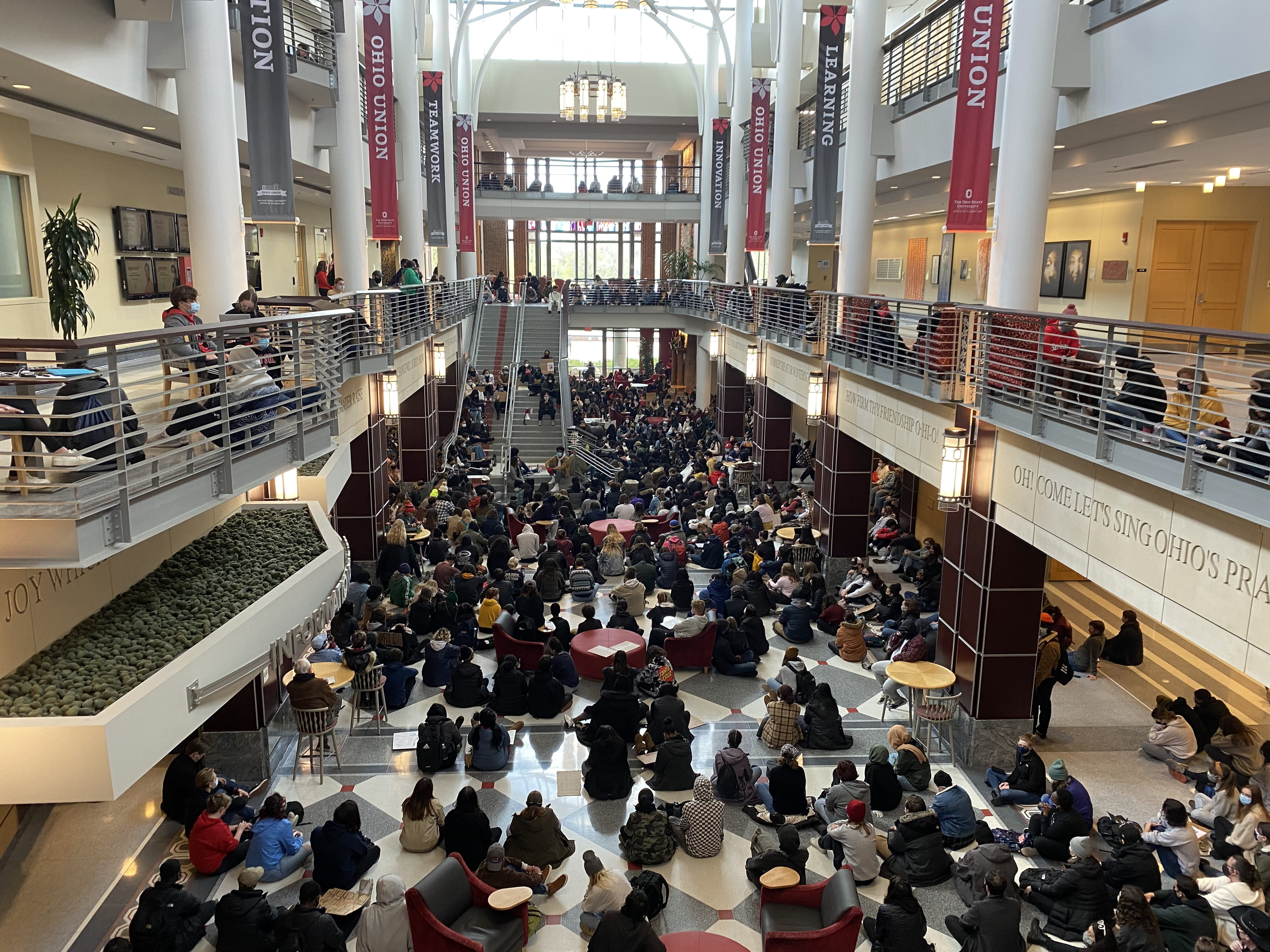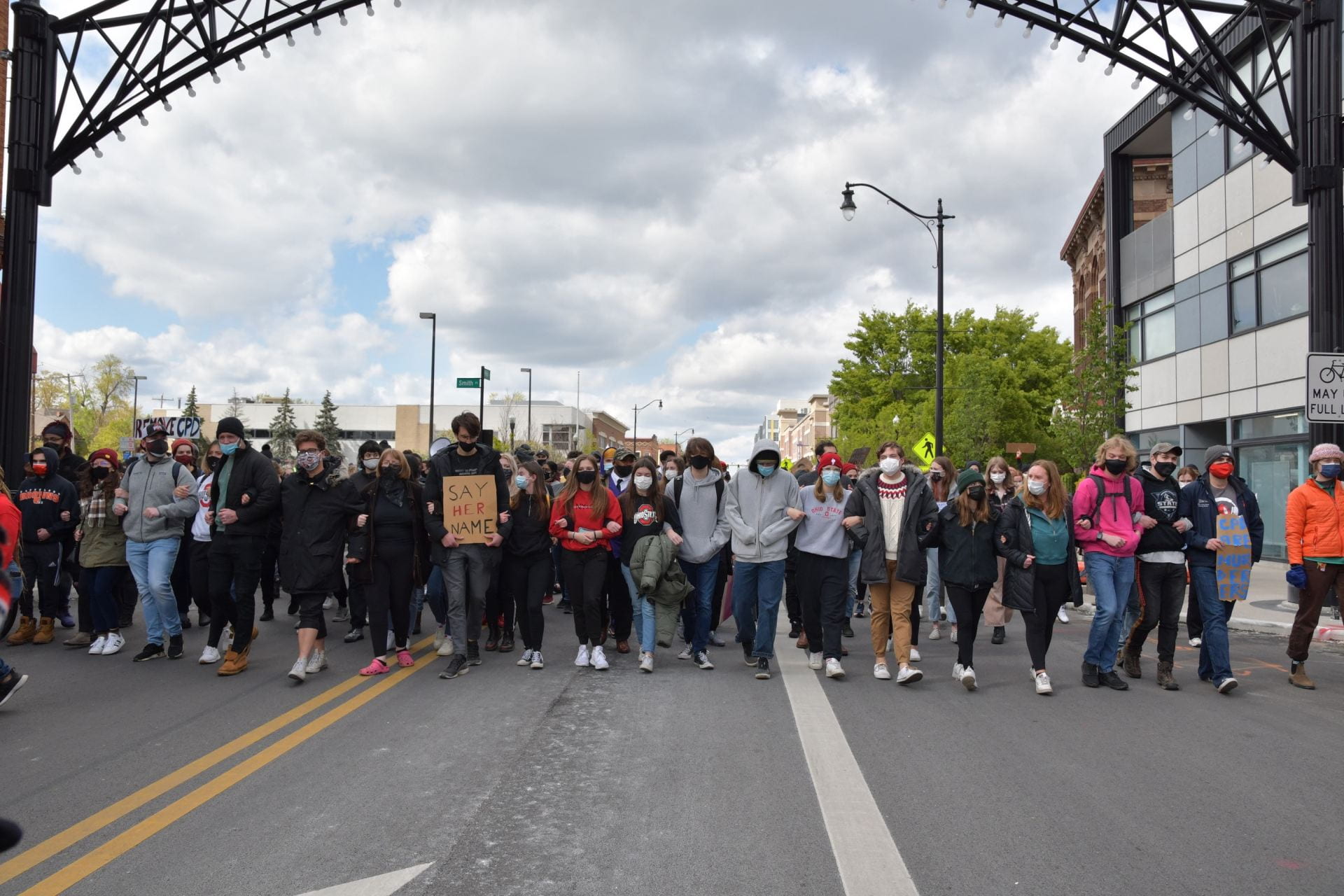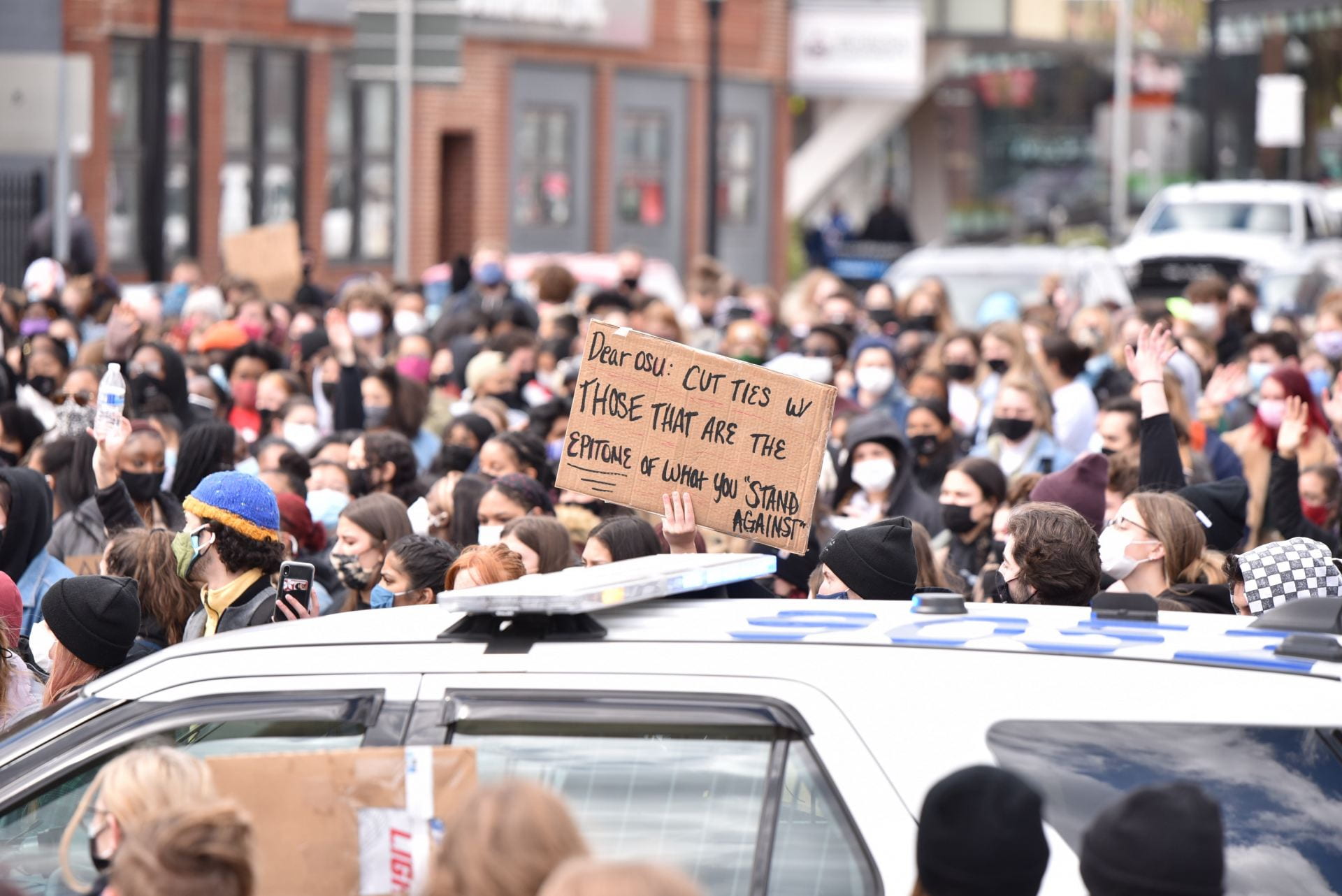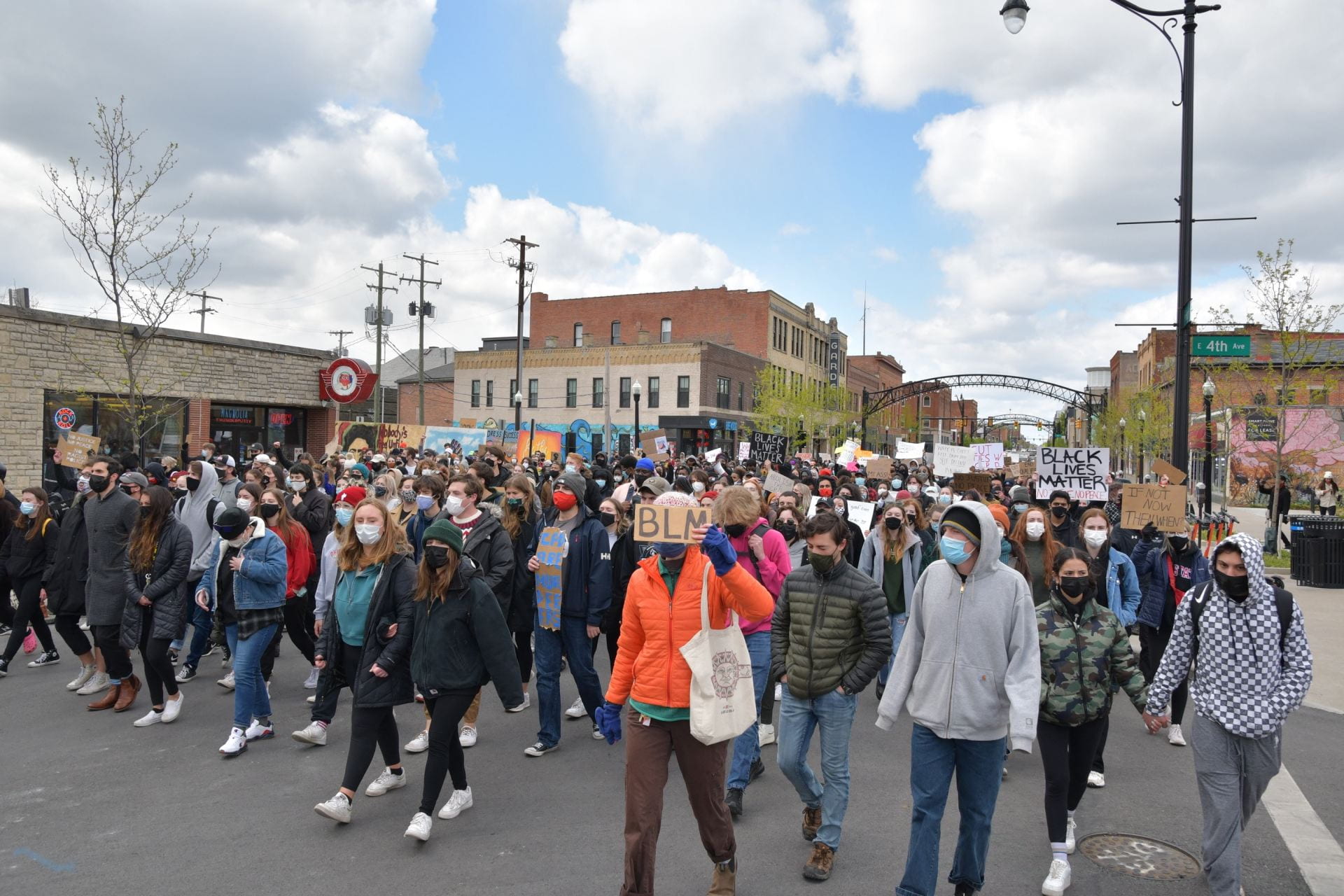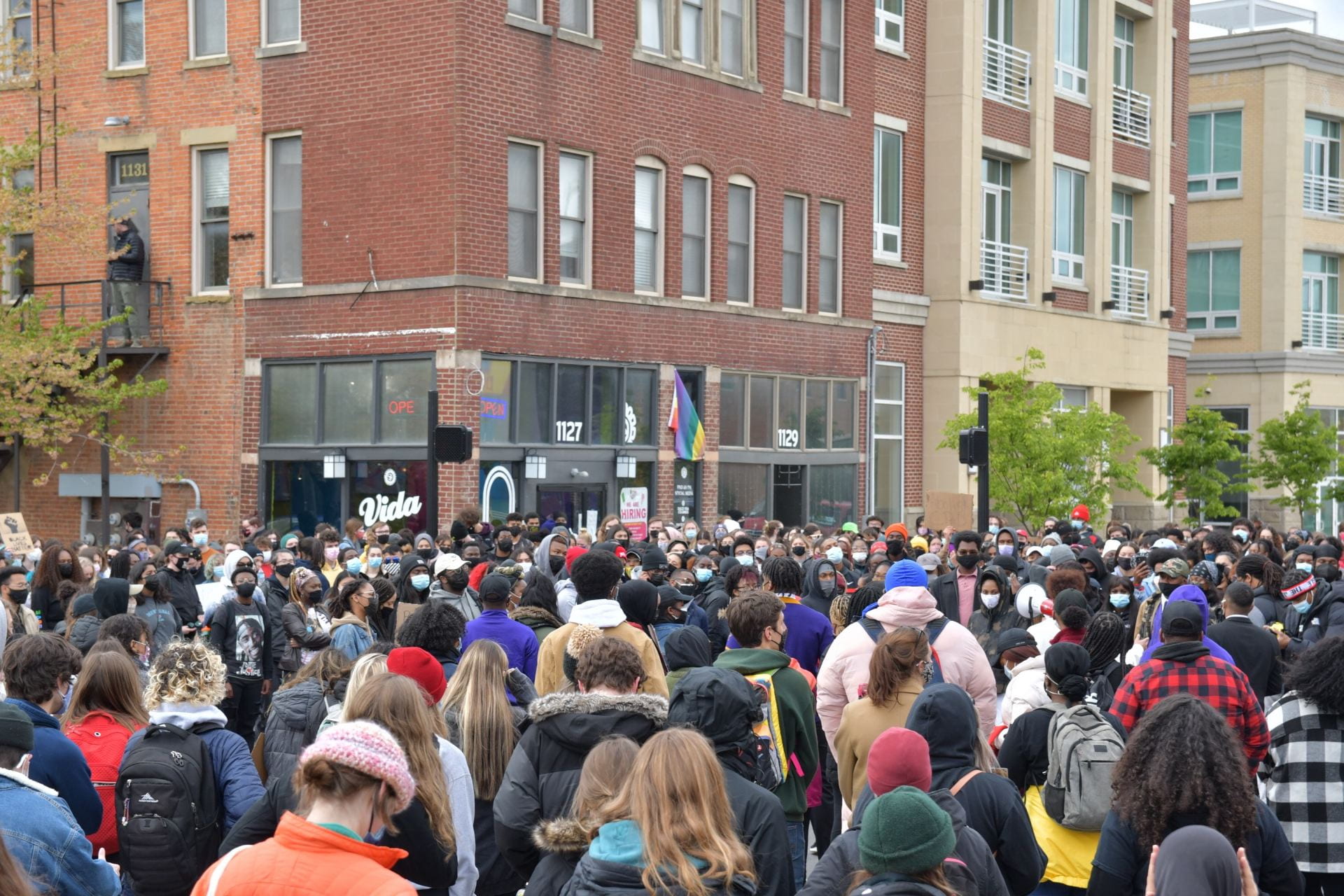
Demonstrators occupy the intersection at North High Street and Seventh Avenue, surrounding CPD cars. Credit: Owen Milnes | Campus Producer
More than 400 people — largely Ohio State students — gathered outside the Ohio Union before staging a sit-in inside the building Wednesday to protest Ohio State’s relationship with Columbus Police following the recent Columbus Police killing of Ma’Khia Bryant.
Organizers told the crowd the protest was for police abolition, not reform. They also called out the university for not acknowledging Tuesday’s shooting and said its relationship with Columbus Police makes students feel unsafe.
The protest came after Bryant, a Black 16-year-old girl in foster care, was shot and killed on the southeast side of Columbus Tuesday. Around the same time of the shooting, Derek Chauvin was found guilty of murder for the death of George Floyd.
Protesters sat in silence inside the Ohio Union for 16 minutes — for Bryant’s age — in solidarity with her.
Roaya Higazi, former Undergraduate Student President, spoke to the crowd about demands that USG proposed in June 2020. These demands include ending contracts with Columbus Police on all investigations and events, university police reevaluating funds going to Columbus Police to restrict their presence in the off-campus living area and reallocate police funds toward university student support offices, including the Office of Diversity and Inclusion, the Multicultural Center and Counseling and Consultation Services.
“Over 20,000 community members — not just students, faculty members, students, staff, people from the Columbus community, alumni, have all come together asking for these demands to be met, and we have yet to see any of them come through,” Higazi, a fourth-year in city and regional planning, said.
University spokesperson Ben Johnson said in a statement the university’s primary law enforcement agency on all campuses is University Police. However, the university contracts with the Columbus Police for specific services, mainly traffic control for athletic events.
The university also has a mutual-aid agreement that allows University Police to assist the Columbus Police off campus, Johnson said.
Speakers talked about what they felt was a double standard by the police, mentioning February’s sled riding and Saturday’s Chitt Fest riot as two instances.
Higazi said the hundreds of students and some police officers sledding without masks in February saw no repercussions even after many emailed university administrators with concerns.
More than 100 people took to the South Oval the night of Feb. 2 to sled on pizza boxes, storage bins, skis, snowboards, move-in carts, park benches and a dumpster — despite a statewide curfew. Few were wearing masks, and two officers joined in on the sledding.
Saturday night, despite university, state, federal and local COVID-19 guidelines, more than 1,000 people — mostly white — gathered on Chittenden Avenue following the Ohio State spring game. The gathering turned into a riot which saw multiple flipped cars and property damage. Columbus Police circled the area in helicopters, but zero arrests were made.
Johnson said in a Sunday statement that the university is working with Columbus Police to identify students who participated in the destruction. Those students could face legal penalties and student conduct charges.
The sit-in was followed by a march south on High Street toward the Ohio Statehouse where protesters chanted Bryant’s name and to defund Columbus Police.
The crowd grew to about 600 people at the start of the march.
A vigil for Bryant is planned for 7 p.m. Wednesday night at 43 S. Douglass St. Afterward, a demonstration is planned for 8:15 p.m. at the Columbus Police headquarters.

